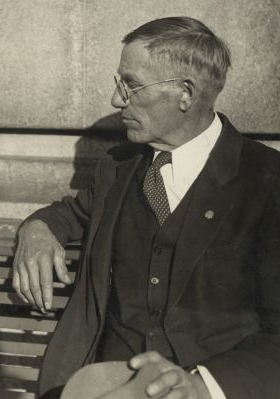Georgia Olive Cozzini, February 14, 1915 (Springfield, Mo.) – October 10, 1983 (Milwaukee, Wis.)
VP candidate for Socialist Labor Party (1956, 1960)
Running mate with nominee: Eric Hass (1905-1980)
Popular vote (1956): 44,300 (0.07%)
Popular vote (1960): 47,522 (0.07%)
Electoral vote (1956): 0/531
Electoral vote (1960): 0/537
The campaign (1956)
Eric Hass was nominated for a second time, and for the next two elections his running mate was Socialist Labor Party activist Georgia Cozzini of Milwaukee.
Cozzini's acceptance speech included: "Outside the Socialist Labor Party, there may be surprise over a woman being nominated on the national slate. But it is not as a woman that I accept the nomination! It is as a member of the only political party-- the only organization that represents the interests of the majority-- the working class. For the major economic struggle today recognizes neither division nor difference as to sex or race. This is the struggle between the working class and the capitalist class over the division of the products of labor."
The 1956 SLP platform is yet another long essay, which is the Party's style. The key paragraph that demonstrated the SLP remained the Party of De Leon purists would be this:
The Socialist Labor Party declares that the only alternative to social ruin and possible atomic war is the abolition of capitalism and all forms of class rule and the establishment of Socialism. We must add that bona fide Socialism has nothing in common with the bureaucratic despotism which, despite the "collective leadership" that has replaced Stalin's one-man rule, masquerades as "Socialism" in Soviet Russia. Nor does Socialism mean "making the politician the boss." Socialism, as Karl Marx conceived it, as Daniel De Leon, the great American Marxist, developed it, and as advocated by the Socialist Labor Party, is a society of industrial democracy in which the factories, mills, mines, railroads and land, etc., are owned collectively by all the people, where production is carried on for use instead of for sale and profit, and where the industries are operated and administered democratically by the workers themselves, organized in Socialist Industrial Unions.
A government ruling provided equal time for the third parties on television networks, making Corzzini one of the first SLP candidates to be televised. She was well spoken and articulate, although like most politicians of the era had not learned how to effectively play to the camera in this emerging technology. JFK would teach all the others how to do that in 1960.
The SLP had a stronger election result than any other political party of the Left in 1952. On the Ballot in 15 states, they finished with the highest percentages in Washington (0.65%), Colorado (0.50%), New Jersey (0.27%) and Massachusetts (0.24%). In King County, Wash. (i.e. Seattle) they polled 1.37%.
The campaign (1960)
The 1960 SLP platform thesis statement, offering the Party's version of socialism as an alternative to nuclear self-destruction:
The overriding issue of the 1960 campaign is SOCIALISM and SURVIVAL V. CAPITALISM and CATASTROPHE! This conclusion is based on a sober and realistic appraisal of a situation that actually exists and from which no one can hide. The whole human race is poised on the razor edge of nuclear catastrophe. As each day ends with the missiles resting on their launching pads, the danger is so much greater that the next will witness the outbreak, by accident or design, of a suicidal nuclear war.
This was not an exaggerated concern. 1960 was the first election I can remember. In school we had three drills each with their own special siren: fire, earthquake, and nuclear war. The Cuban Missile Crisis of 1962 only heightened the sense of urgency felt by younger people. As these little Boomers turned voting age, the SLP enjoyed a brief small spike in election results.
The SLP held steady with a similar national finish to the 1956 results. Top states out of 16 with recorded votes for SLP: Washington (0.88%), Colorado (0.38%), and Illinois (0.22%).
Election history:
1942 - Governor of Wisconsin (Independent Socialist Labor) - defeated
1944 - Governor of Wisconsin (Socialist Labor) - defeated
1946 - US Senate (Wis.) (Socialist Labor) - defeated
1948 - Governor of Wisconsin (Socialist Labor) - defeated
1957 - US Senate (Wis.) (Socialist Labor) - defeated
1958 - US Senate (Wis.) (Socialist Labor) - defeated
1962 - US Senate (Wis.) (Socialist Labor) - defeated
1970 - Governor of Wisconsin (Socialist Labor) - defeated
1974 - Governor of Wisconsin (Socialist Labor) - defeated
Other occupations: door-to-door encyclopedia sales, "housewife," community activist
Buried: cremated, ashes spread at a lake in Bayfield County, Wis.
Notes:
Family moved to Milwaukee, Wis. in 1924.
Georgia Olive Purvis married Artemio Cozzini in 1936.
Joined the SLP in 1939.
One of her opponents in the 1944 Governor's race was George Nelson, Socialist Party of America VP
nominee from 1936.
The winner for the 1946 US Senate race was Joe McCarthy.
The winner for the 1957 and 1958 US Senate races was William Proxmire.
The winner for the 1962 US Senate race was Gaylord Nelson.
The winner for the 1970 and 1974 Governor's race was Patrick Joseph Lucey, later the 1980 National
Unity Party VP nominee








